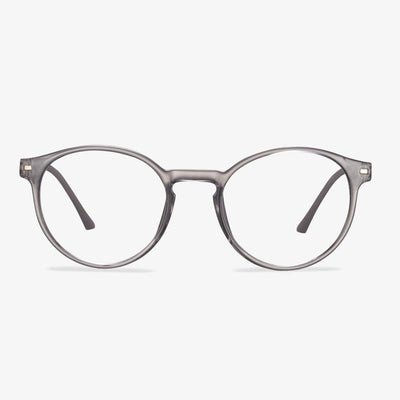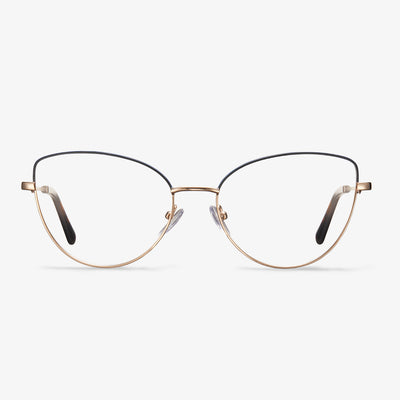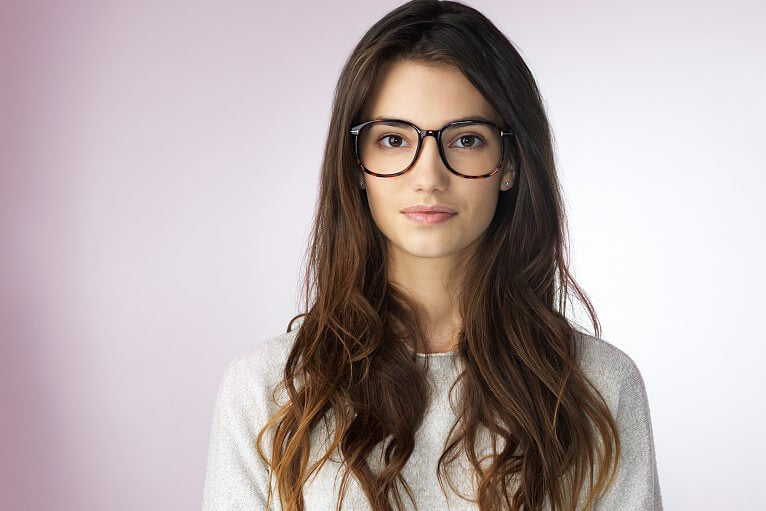Eyeglass World
Eyeglass World has in-store LABS in every location, so most prescriptions are available on the same day. If you are looking for upgraded lenses, finished sunglasses, or other special lenses, Eyeglass World can handle these special options at home and get them back to you the same day! Many optical locations do not provide such quick service.
The design evolution of progressive lenses
Spherical and aspheric designs
The design of the front surface of the far-use area of the early progressive lens is similar to that of the ordinary spherical single vision lenses, so it is called a spherical progressive lens. Since 1974, the front surface of the far-use region of the lens is designed to be aspheric by designers, which not only reduces the peripheral aberration but makes the lens thinner, lighter, and less powerful.
Hard and soft design
For hard design, the channel is short, and the gradient is large. The near-use area position is high. The effective visual area of remote and near-use areas was larger. Peripheral astigmatism is relatively concentrated. Because surrounding astigmatism increases rapidly and the distribution is dense, the curve effect is more obvious. The gradient area is narrow. It is more difficult and takes longer for wearers to adapt.
Lenses with soft designs have slower gradients, longer gradients, and wider gradients. The angle of rotation of the eye from the far area to the near area is greater. It's easier to get used to. Compared with the hard design, the effective visual area of the far and near use areas is smaller, and the location of the near use area is lower.
Single, diverse, and individualized design
Initially, the progressive lenses used a single design, in which each basic curve was scaled equally and a luminosity combination was added within the range of its semi-finished lens blanks. The steepest base curve uses the same lens design as the flattest base curve. Lenses designers quickly realized that the overall performance of the lens could be improved by microcustomizing the lens design, leading to progressive lenses with multiple designs. This kind of design is called diverse design. By the mid-1990s, there was the emergence of individualized lens designs. In addition to using different gradients, these first individualized lens designs used steeper baseline curves with a slightly larger approach area to compensate for increased magnification and reduced field of view.
Symmetrical and asymmetric design
There is no difference between the left and right eyes in the symmetrical design of progressive lenses. As the eyes turn inward when they see near objects, the gradual gradient area gradually tilts to the nasal side from top to bottom, so the left/right progressive lenses should be rotated clockwise/counterclockwise respectively during processing. An asymptotic lens with left and right eye divisions is called an asymmetric design. The gradient is gradually and moderately inclined to the nasal side from top to bottom. The refractive force, astigmatism, and vertical prism of the two sides of the left and right gradient of the asymmetric design lenses are basically similar. At the same time, considering the characteristics of eye movement parameters in binocular vision, the peripheral aberrations of the corresponding positions of the left and right lenses were appropriately balanced to improve the visual effect of the wearer.
Important to measure pupils
The interpupillary distance refers to the distance between the centers of the two pupils when the visual axis is square and parallel. In general, the optical center of the glasses should coincide with the visual axis of the eye when looking at eye level. That is, the optical center distance of the glasses should be the same as the interpupillary distance. Otherwise, visual discomfort will occur, causing visual fatigue and deepening the degree. Therefore, we must improve consumers' awareness of self-quality protection. Understand the knowledge of glasses, otherwise, only mild myopia, the long-term wearing of unqualified glasses will cause the degree to deepen and become high myopia. So be sure to go to a regular optician to get glasses.
Thick Geometric Frames
Eyewear fashion has changed and evolved over the years. Big, thick frames that are round, rectangular, or even hexagonal are loved by celebrities and attendants. Depending on your face shape, you can choose one of these bolder combinations to highlight or contrast some of your face's most obvious features. Hollywood has officially adopted chunky glasses as a necessary item.
What is the best lens material?
MR stands for Mitsui Resin, a raw material for optical lenses made by Mitsui Chemicals in Japan. It is the first high refractive index lens material produced by polyurethane technology in the world. It has the characteristics of high refractive index, high Abbe number, low specific gravity, high impact resistance, and so on. MR series material, with high impact resistance, good tensile strength, and minimal internal stress, is very suitable for the unique design of lens products, like rimless glasses and high bending lenses, etc. At the same time, it has good processing, dyeing, and weather resistance.
Why does an optical shop carry out the preferential activity?
These activities can attract a steady flow of traffic, but to keep the original flow out. It helps improve the store in the community awareness, expand visibility. It can attract new customers to the store, encourage old customers to introduce new customers, and stimulate old customers to buy again. And then increase store sales and add new customers.
Replace the nose pad on your glasses
Remove the screws clockwise and use a toothpick to remove the things left of the broken pads so that the new one can be installed. The next step is to fix the nose pad that we just removed from it. Hold the glasses and then the hole for the nose pad is up, then place the nose pad in and press it with your finger. Then you can see that the round hole in the nose pad overlays with the round hole in that part, and at this time, you can turn the screws. When you finally turn it, you usually turn it three times to hold the nose rest in place. Often, the nose pad can be swung back and forth after installation. This is to match the different shapes of our noses.











































